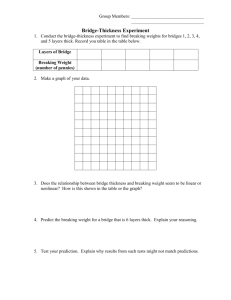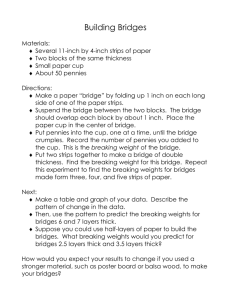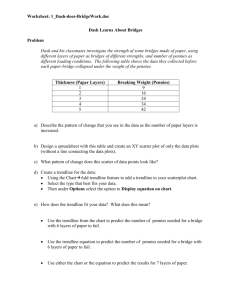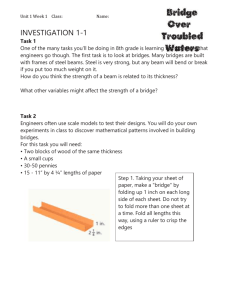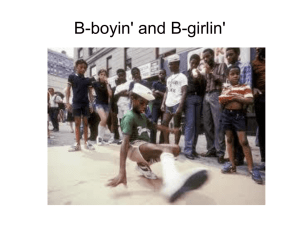Name: Date: ______ Period: ______ Pennies Experiment
advertisement
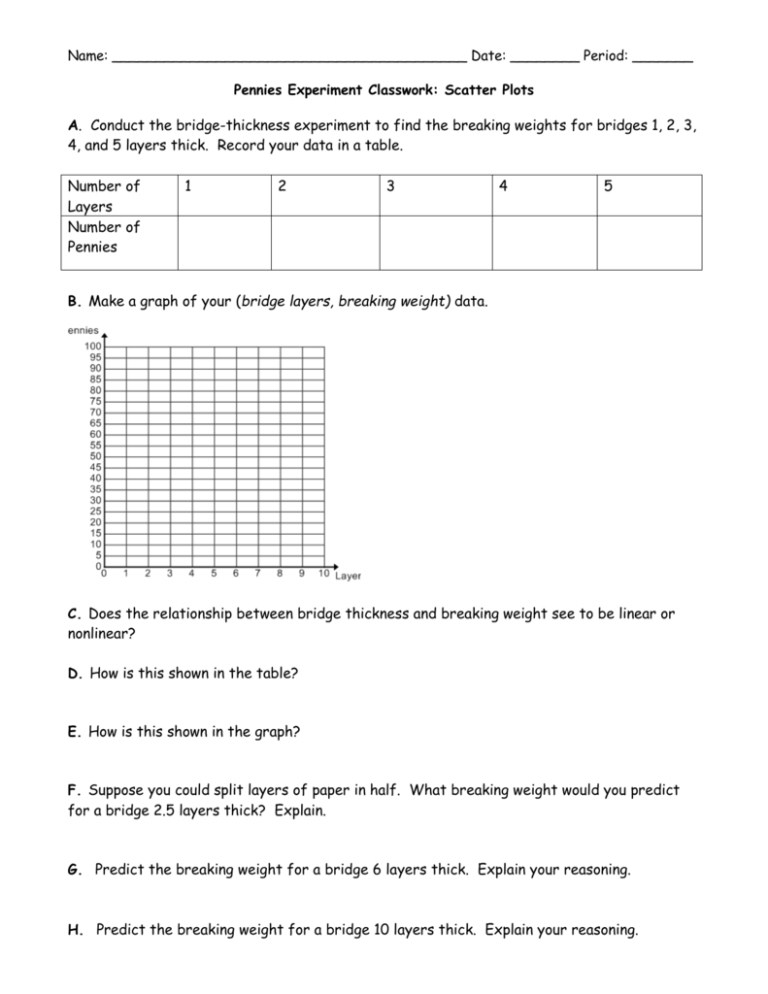
Name: _________________________________________ Date: ________ Period: _______ Pennies Experiment Classwork: Scatter Plots A. Conduct the bridge-thickness experiment to find the breaking weights for bridges 1, 2, 3, 4, and 5 layers thick. Record your data in a table. Number of Layers Number of Pennies 1 2 3 4 5 B. Make a graph of your (bridge layers, breaking weight) data. C. Does the relationship between bridge thickness and breaking weight see to be linear or nonlinear? D. How is this shown in the table? E. How is this shown in the graph? F. Suppose you could split layers of paper in half. What breaking weight would you predict for a bridge 2.5 layers thick? Explain. G. Predict the breaking weight for a bridge 6 layers thick. Explain your reasoning. H. Predict the breaking weight for a bridge 10 layers thick. Explain your reasoning. Name: _________________________________________ Date: ________ Period: _______ Pennies Experiment Homework: Scatter Plots 1. A group of students conducts the bridge-thickness experiment with construction paper. Their results are shown in this table. a. Make a graph of the (thickness, Thickness (layers) Breaking 1 2 3 4 5 6 12 20 29 42 52 61 Weight breaking weight) data. Describe the relationship between thickness and breaking weight. (pennies) b. Suppose it is possible to use half-layers of construction paper. What breaking weight would you predict for a bridge 3.5 layers thick? Explain. c. Predict the breaking weight for a construction-paper bridge 8 layers thick. Explain how you made your prediction. 2. The table below shows the sales for a flower company for the years 2007 through 2012 a. Graph the data on the scatter plot and draw a line of best fit for the data. FLOWER SALES Year Sales (in thousands) 2007 $305 2008 $330 2009 $345 2010 $370 2011 $395 2012 $420 b. Predict what year it will be when sales reach $500 (in thousands). Explain how you know.
